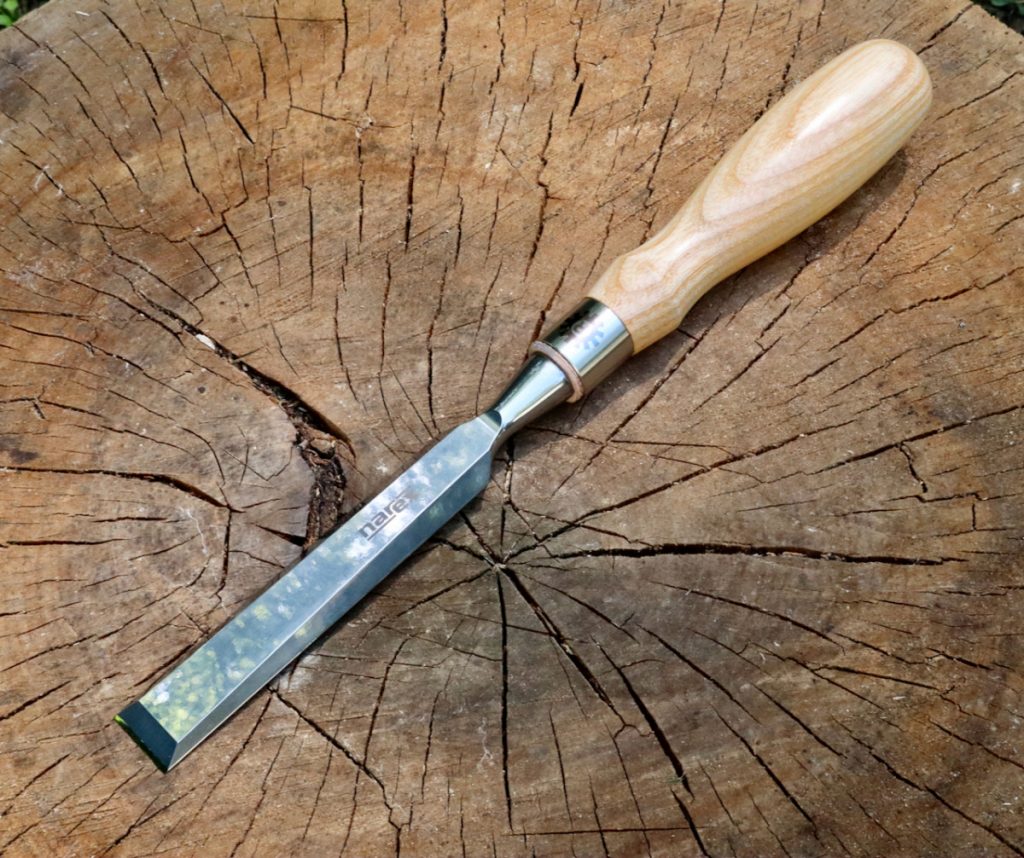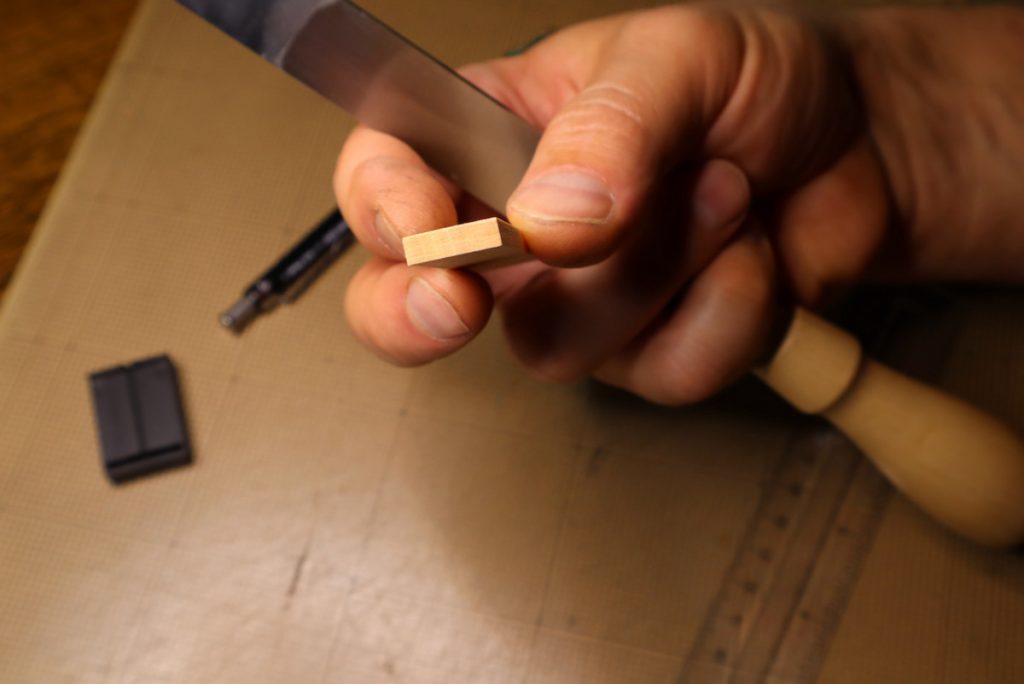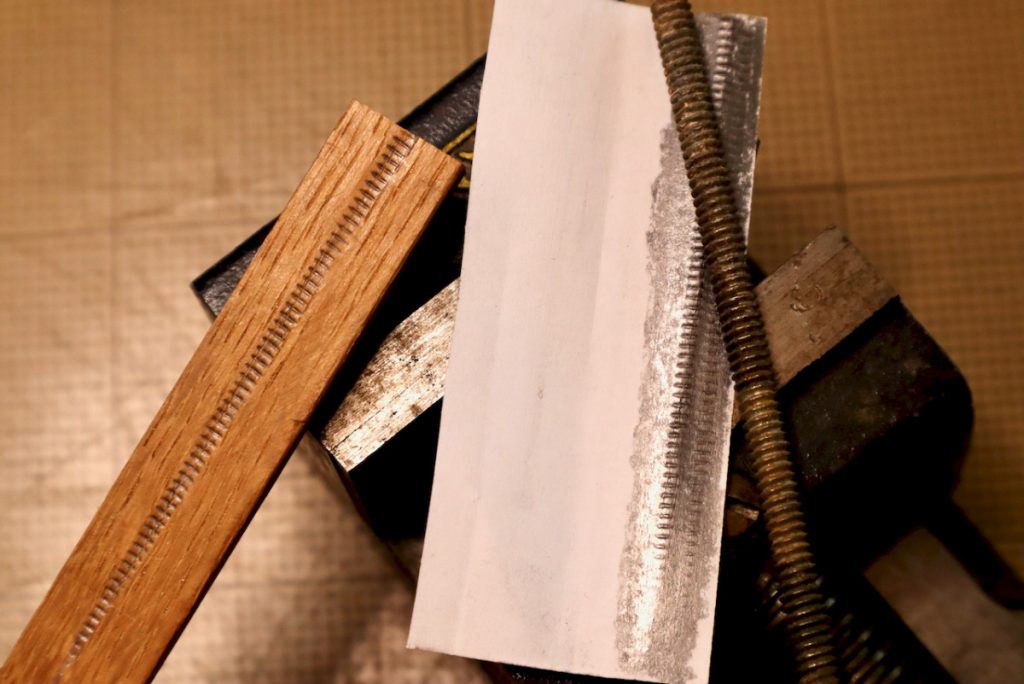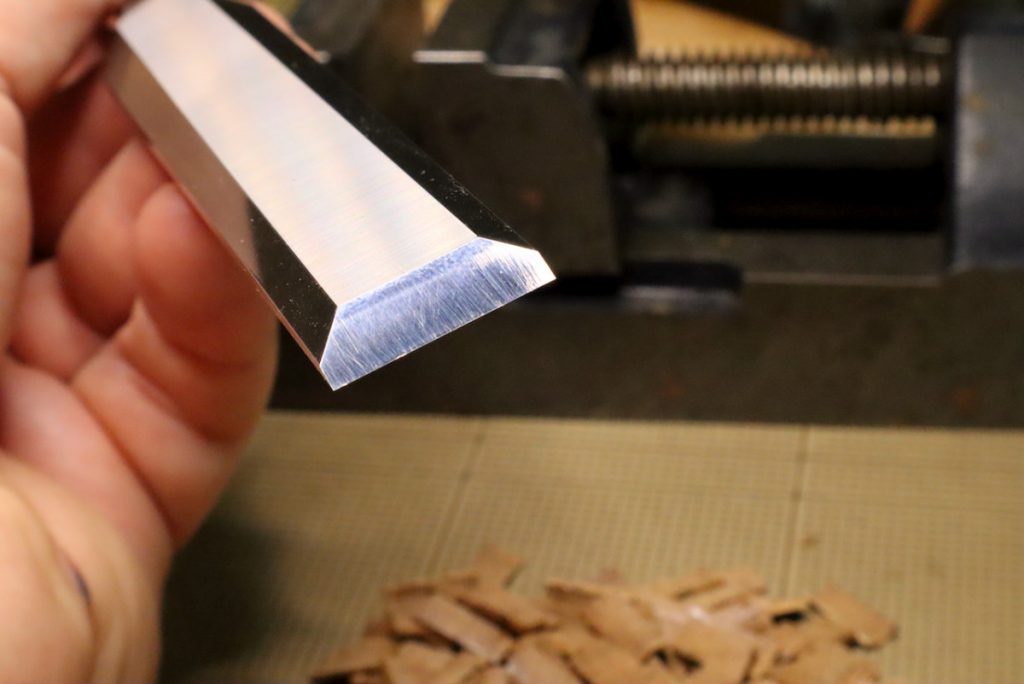We may receive a commission when you use our affiliate links. However, this does not impact our recommendations.
 After talking about the look and feel of the new Richter Chisel (including its test companion the Stanly #750) and last week’s entry on how I sharpened them, we have finally reached the finale of this three-part saga – the actual slicing duel.
After talking about the look and feel of the new Richter Chisel (including its test companion the Stanly #750) and last week’s entry on how I sharpened them, we have finally reached the finale of this three-part saga – the actual slicing duel.
Test methodology
Bench chisels are meant mainly for sheering wood fibers, either across the grain or with it. They can be pushed by hand or via the emanating thrust of a mallet or a hammer. The more the blade engages with the wood the more it gets dull. The question is how to find a way to put the blade to a controlled test where the material it slices is homogenized and the deployed impetus behind the blade is uniformed throughout the test.
I decided to follow a clever knife testing technique that was devised by the creator of The Cedric & Ada Gear and Outdoors on Youtube. There, a rope is used as a test material. The tester repeatably slices the rope and every ten rope slicing the blade is withdrawn in order to put it through the paper keen-edge test. If the blade can effortlessly slice a sheet of paper, the test continues, so on and so forth, until it no longer can pass the paper test. At this point, we know how many rope cuts the tested blade was able to produce before dulling out.
After stopping the Stanley 750 I put it to the keen-edge test on a sheet of paper. Later on during the test, when the blade can no longer slice the paper with elegance and begins to tear it, we know that it is beginning to get dull.

In my first test attempt, I decided to use basswood, which is soft and highly grain-homogeneous wood. I also marked on the test piece a millimeter graduation scale to guide my slicing action and keep it as uniform as possible.



A sharp edge should be able to shear the fibers smoothly. A dull edge will break and tear them apart.

But after giving the basswood a try with both chisels I saw that I could spend days slicing this wood without any significant reduction of edge sharpness. So in order to expedite the test and challenge the edge with a much tougher timber, I decided to switch to white oak. First I chose a strip with a cross-section of 1/2” x 1/4”. Then I perfected and expedited the demarcation of my graduation system by using a screw that I pressed against the wood.

With a piece of paper that I penciled over with soft lead and tucked in between the screw and the wood, I was able to provide some very visible micro-grooves to guide my chisel later on.

 With the Stanley #750 chisel in my hand, I began testing the edge on the white oak. After every ten end grain slices, I attempted to pass the edge on a piece of paper and observed if it did so effortlessly. Once or twice the blade tore the paper instead of slicing it. I was not sure if this was because I held the paper in an odd way or perhaps something ells, so I decided to repeat the slicing test on a fresh part of the paper sheet.
With the Stanley #750 chisel in my hand, I began testing the edge on the white oak. After every ten end grain slices, I attempted to pass the edge on a piece of paper and observed if it did so effortlessly. Once or twice the blade tore the paper instead of slicing it. I was not sure if this was because I held the paper in an odd way or perhaps something ells, so I decided to repeat the slicing test on a fresh part of the paper sheet.
Interestingly, the consecutive pass was quite successful so I kept the test going. As the counting reached the 200 marks the paper test produced unsatisfactory results as the blade tore through it instead of the elegant glide and slice that I experienced before. I also felt that a slight burr developed on the back of the edge which was the definitive indication that the blade is dulling out.

The Stanley #750 at the end of the test. After 200 slices a burr started to developed behind the cutting edge.

Then I turned to the Richter chisel. I repeated the same test regime and after 280 slices that were paced by the keen-edge paper slicing verification intervals, I called it a day. I am quite sure that this chisel could have kept going strong past the 280 mark. The only reason I stopped at 280 is that my white oak piece got too short to be held safely. Yes, I know, I should have prepared more wood for the test, and yes, I might come back to it later on. But even at this preliminary stage, I believe that my initial test can provide some interesting insights into the quality of the blades.


The new Richter chisel from Narex proved to be superior to the Stanley #750 in terms of blade retention, geometry, finish and feel. The Stanly is a good chisel, but the Richter feels more comfortable in my hand and will stay sharp longer.

After I conducted my test and began writing this story a reader commented about a highly detailed chisel comparison test that can be watched on youtube. The Wood By Wright test is out of this world and include a level of sophistication that will blow your mind or slice your head off, in our case. James Wright compares more than a dozen chisels of different makers. He put them through many tests and the outcome is quite interesting. He concluded that the Richter is the best chisel out there when we take into account: Price, edge retention, and comfort of use.
Here are some supplies and tools we find essential in our everyday work around the shop. We may receive a commission from sales referred by our links; however, we have carefully selected these products for their usefulness and quality.








